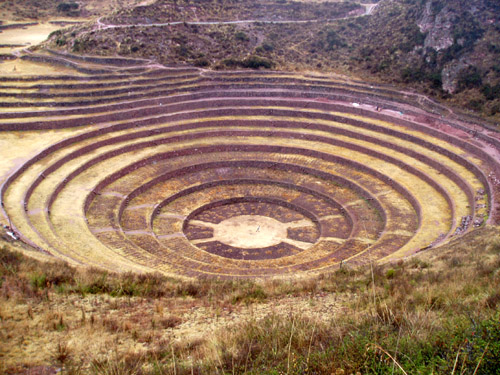
Monumental architecture


Inca architecture was by far the most important of the Inca arts, with pottery and textiles reflecting motifs that were at their height in architecture. The main example is the capital city of Cuzco. The breathtaking site of Machu Picchu was constructed by Inca engineers. The Inca constructed stone temples without using mortars yet the stones fit together so well that one could not fit a knife through the stonework. The rocks used in construction were sculpted to fit together exactly by repeatedly lowering a rock onto another and carving away any sections on the lower rock where the dust was compressed. The tight fit and the concavity on the lower rocks made them extraordinarily stable. Similar rockwork allegedly exists on Easter island. Some schools of thought contend that this similarity could be evidence for Inca voyages to Easter island. This hypothesis is rejected in the following quote from a Nova program where Dr. Jo Anne Van Tilburg" 'all archaeological, linguistic, and biological data' point to Polynesian origins in island Southeast Asia." In a related set of questions and answers, the architect Vince Lee said "I think that the answer to that is probably not. It's the sort of question you can never answer 100 percent in the negative. In other words, we can't prove that something didn't happen but to date a lot of excavation and study has been done on Easter Island. Absolutely no evidence has been found of visitation by Andean peoples such as broken pottery or stone implements or really anything else that would indicate the presence of Andean people here so I think it's very unlikely that these walls were built by Andean peoples or that they were influenced by Andean builders. But they are remarkably similar to some of the walls of Peru, especially these two examples, so I think that will forever remain somewhat of a question. I believe that the prevailing answer to date, which is that the Peruvians had nothing to do with them, is probably correct."
The Inca had an extensive road system which consisted of two main roads as described in the following quote by Cieza de Léon: "The Incas built two roads the length of the country. The Royal Road went through the highlands for a distance of 3,250 miles, while the Coastal Road followed the seacoast for 2,520 miles."
Ceramics, precious metal work, and textiles

Almost all of the gold and silver work of the empire was melted down by the conquistadors. Ceramics were painted in numerous motifs including birds, waves, felines, and geometric patterns. The most distinctive Inca ceramic objects are the Cusco bottles or ¨aryballos¨.Many of these pieces are on display in Lima in the Larco Archaeological Museum and the National Museum of Archaeology, Anthropology and History. Textiles were important in that they showed social status, and could also be used as armor. Another important use of textiles was in the creation of rope bridges across gorges.

No comments:
Post a Comment